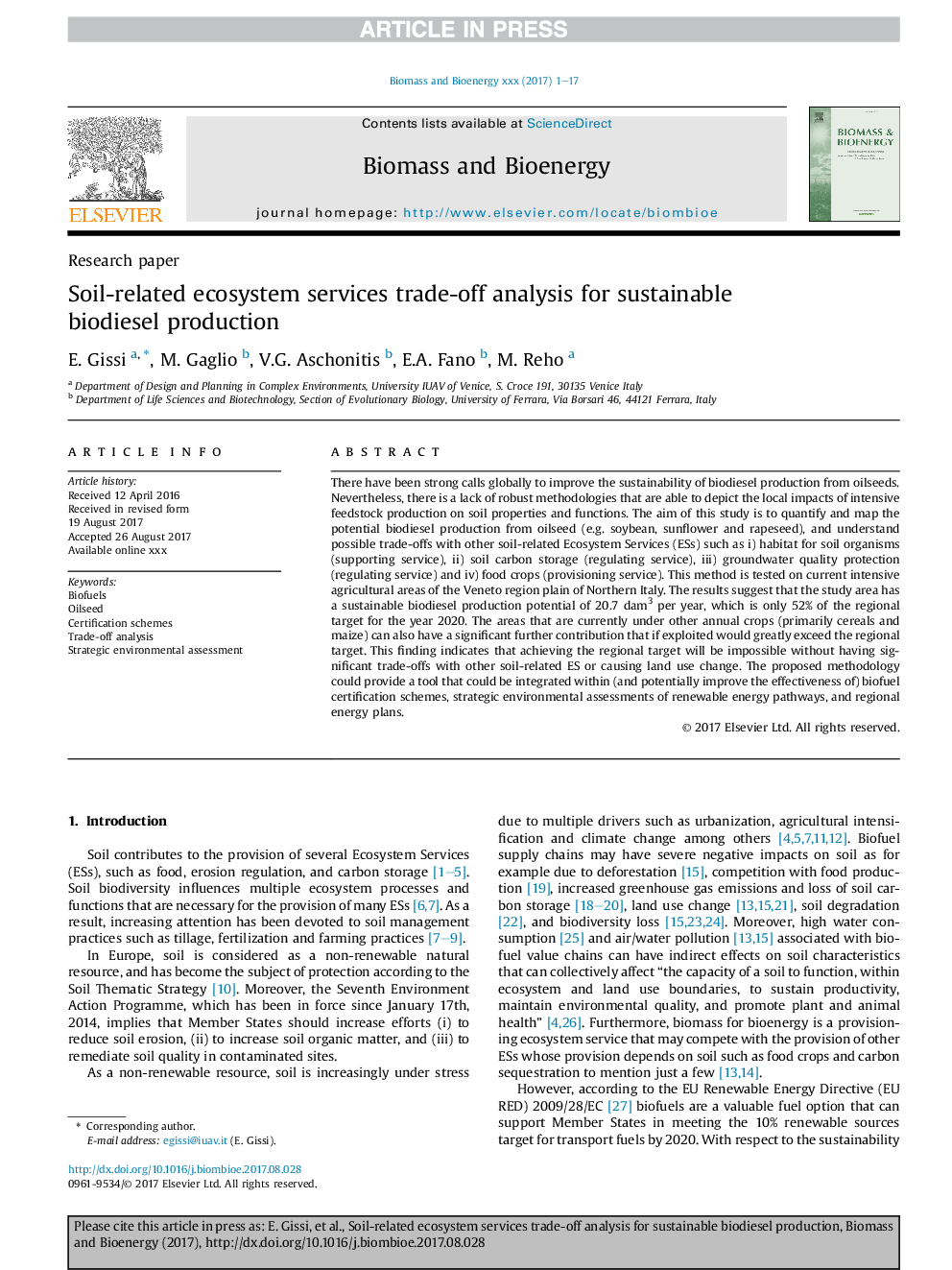| Article ID | Journal | Published Year | Pages | File Type |
|---|---|---|---|---|
| 7062883 | Biomass and Bioenergy | 2018 | 17 Pages |
Abstract
There have been strong calls globally to improve the sustainability of biodiesel production from oilseeds. Nevertheless, there is a lack of robust methodologies that are able to depict the local impacts of intensive feedstock production on soil properties and functions. The aim of this study is to quantify and map the potential biodiesel production from oilseed (e.g. soybean, sunflower and rapeseed), and understand possible trade-offs with other soil-related Ecosystem Services (ESs) such as i) habitat for soil organisms (supporting service), ii) soil carbon storage (regulating service), iii) groundwater quality protection (regulating service) and iv) food crops (provisioning service). This method is tested on current intensive agricultural areas of the Veneto region plain of Northern Italy. The results suggest that the study area has a sustainable biodiesel production potential of 20.7Â dam3 per year, which is only 52% of the regional target for the year 2020. The areas that are currently under other annual crops (primarily cereals and maize) can also have a significant further contribution that if exploited would greatly exceed the regional target. This finding indicates that achieving the regional target will be impossible without having significant trade-offs with other soil-related ES or causing land use change. The proposed methodology could provide a tool that could be integrated within (and potentially improve the effectiveness of) biofuel certification schemes, strategic environmental assessments of renewable energy pathways, and regional energy plans.
Related Topics
Physical Sciences and Engineering
Chemical Engineering
Process Chemistry and Technology
Authors
E. Gissi, M. Gaglio, V.G. Aschonitis, E.A. Fano, M. Reho,
